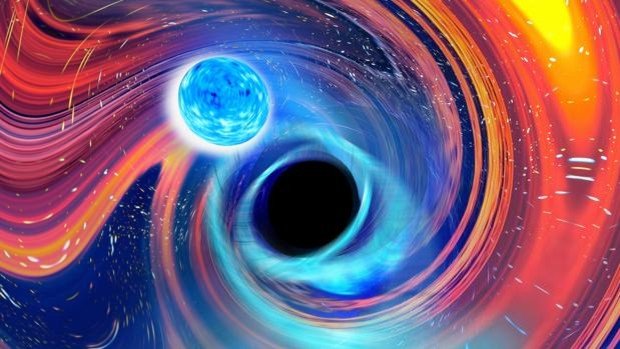They detect that a black hole has ingested the neutron star of their orbital system

Gravitational waves have become news again. Astrophysicists have first detected how a black hole engulfed a neutron star by detecting the gravitational waves generated. Black holes and neutron stars are the two most extreme and mysterious objects in the universe, and the fusion between them has caused great expectation. Detected by American observatories LIGO and Italian Virgo in January 2020, it has been published today in The Astrophysical Journal Letters. In addition, once not, the merger between two giants has been detected twice. One on 5 January 2020 and the other on 15 with ten days of difference.
The researchers have clarified that these events occurred some 1,000 million years ago, but that being so massive, today its gravitational waves can be detected.
Both black holes and neutron stars occur when large mass stars die, but black holes are even more massive than neutron stars. In a detected shock, the black hole had nine times more mass than the Sun and the neutron star twice larger; in the other, the black hole six times larger than the Sun and the neutron star 1.5 times. In both cases, the black hole has ingested the neutron star orbiting its system.
Gravitational wave harvest
Gravitational waves are disturbances in the space-time curve generated by massive moving objects. Since receiving the Nobel Prize in 2017, researchers have often identified mergers between two black holes and two neutron stars, but never between a black hole and a neutron star.
The new detection is significant, as it has long been suggested that there could be binary systems of black holes and neutron stars, something that has so far not been demonstrated. The new research will serve to confirm the hypothesis and investigate the evolution of binary systems of this type of giant elements.
Buletina
Bidali zure helbide elektronikoa eta jaso asteroko buletina zure sarrera-ontzian











